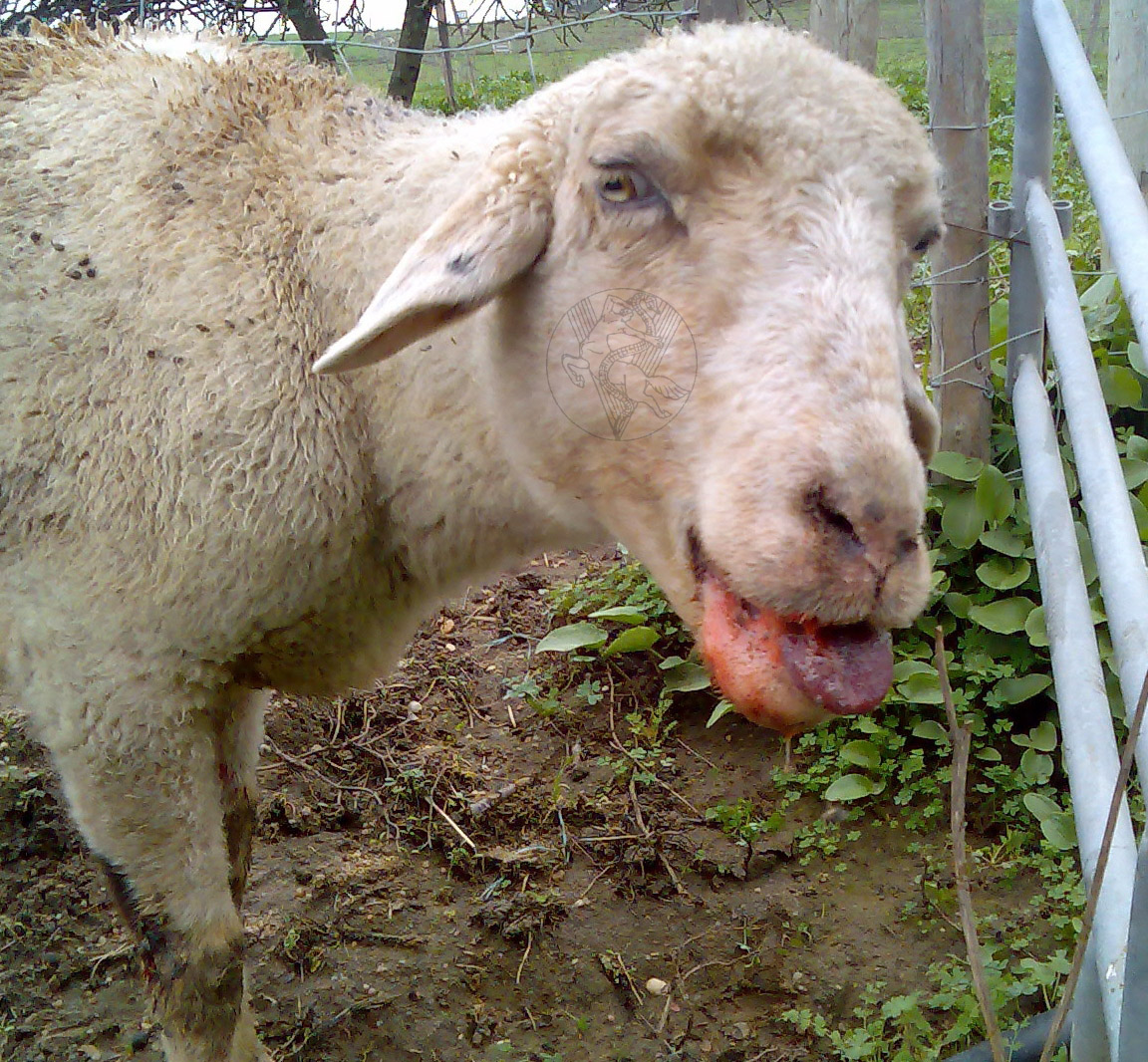Blue Tongue is an infectious disease affecting sheep primarily. The disease is characterized by stomatitis, rhinitis, enteritis, and lameness. Sheep of all ages are infected, but animals of about one year are highly susceptible. Bovines occasionally infect, but goats do not suffer from the blue tongue virus. Lambs obtain antibodies through colostrum and develop solid immunity for up to 2 months.
Importance of Blue Tongue in Sheep
Farm animals are affected by many emerging and infectious diseases. Bluetongue in sheep has been reported from India only, with a morbidity rate of 50-75% and a mortality rate of 20-40%. Recovered animals develop solid immunity. The disease is transmitted primarily through sand flies or ades mosquitoes, and outbreaks are commonly seen in the rainy season when the vector population is high.
Causes of Blue Tongue in Sheep
The disease is caused by the bluetongue virus, under the genus orbivirus belonging to the daily Reovoiriade. The virus has at least 24 antigenic strains. The virion is non-enveloped, with a double-layered particle encircled by a capsid protein. The core material is double-stranded RNA.
Pathogenesis of Sheep Blue Tongue
The pathogenicity of the disease is as follows:
- After reaching circulation, the virus is localized in the endothelium of blood vessels and damages these vessels to produce epithelial lesions.
- The virus is confined in erythrocytes suggesting that bone marrow stem cells are the site for its replication.
- The virus does not transmit with milk, wool, or saliva contamination.
Clinical Signs and Symptoms of Bluetongue Infection
The most common clinical signs are as follows:
- The clinical signs are more severe in younger animals, which die while adults recover.
- Initially, affected animals reveal a high rise in body temperature followed by excessive salivation, nasal discharge, and redding of buccal and nasal mucous membranes.
- Subsequently, saliva and nasal discharge become blood mixed, and there is a bad smell from the mouth.
- Lips, gums, dental pad, and tongue are swollen, and purple-colored necrotic lesions are found on the tongue’s lateral aspect, resulting in difficulty swallowing.
- Laminitis, coronets, lameness, occasional diarrhea, breaking of wool, and rapid loss of condition are also noticed.
- Recovered animals suffered from convulsions, abortions, and cracking of hooves and skin.
- Affected bovines usually show a rise in body temperature, stiffness, laminitis affecting all four limbs, excessive salivation, edema of the lips, inappetence, nasal discharge, tongue ulceration, dental pad, and muzzle are abnormal.
Pathological Lesions of Blue Tongue Infection
The Pathological signs are as follows:
- Generalized edema, aspiration pneumonia, hyperemia.
- Hemorrhage and necrosis of the skeletal and cardiac muscles.
- Hemorrhage at the base of the pulmonary artery.
- Tongue lesions, predominantly bluish coloration.
Diagnosis of Bluetongue Infection
The disease can be diagnosed in the following ways:
- Characteristics of clinical signs.
- Postmortem lesions.
- Blood examination reveals the high activity of creatine phosphokinase enzyme due to muscle degradation.
- The disease can be confirmed by inoculating the blood of the suspected animal into unweaned white mice or hamsters.
- Serological tests like the Compliment fixation test, Agar Gel Precipitation test, neutralization test, fluorescent antibody, or ELISA are also used for confirming the disease.
Treatment of Bluetongue Infection
The treatment strategies for ovine blue tongue infections are as follows:
- There is no specific treatment for the disease, but oral lesions are washed with mild antiseptic solutions like alum or weak potassium permanganate solution and painted with gentian violate.
- Broad-spectrum antibiotics like streptopenicilin, tetracycline, erythromycin, or gentamycin may be used to check secondary bacterial infection.
Prevention and Control of Blue Tongue
The disease can be prevented in the following ways:
- Maintain strict hygiene and biosecurity measures at your farm
- Proper vector control measures help in reducing the occurrence of disease.
- Vaccination, if available, of the flock.
- Identification of risk zones.
- Quarantine and movement restriction of potentially sick animals.
Final Advice on Blue Tongue Infection in Sheep
Bluetongue is a viral disease of all domestic and wild ruminants. The disease is transmitted by mosquito vectors and affects healthy animals. The disease mainly causes fever, hemorrhagic anemia, and bluish coloration of the tongue, muzzle, and gum. The disease can be prevented by controlling vectors, improving hygiene, and vaccination.

